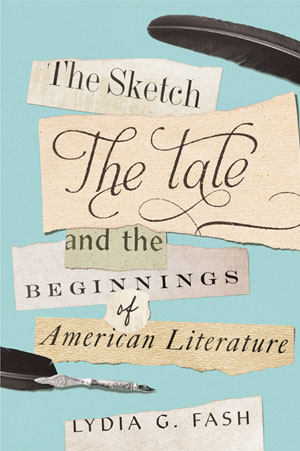
Between the War of 1812 and the Mexican-American War (1846-1848), US folks celebrated US beginnings in all sorts of ways. They formed Forefather Societies. They held Forth of July parades and oration contests. They painted grand historical canvases. They founded historical societies. They erected monuments. And they wrote lots of stories about Puritans, revolutionaries, and ancestors.
I was fascinated by this concerted attention to beginnings and how white US writers and citizens were using these beginnings to define who was “American” and what it meant to be “American.” (The most accurate adjectival form of the United States is US, but I use “American” to acknowledge how grandiose and manufactured the concept is.) Even though, following Sir Walter Scott’s success with Waverly, there was plenty historical fiction published in the States, to me, this problem is fully narrative and not just about historical fiction. Rather this moment, which I call the culture of beginnings, is about a widespread effort to define beginnings and, in turn, use those pinpointed moments and ideas to articulate the sense of a national people.
Because the beginning is more prominent in shorter works—where the beginning and ending are close together—and because shorter works were easier to publish before the 1850s, this theorization of who was American took place in sketches and tales, the two dominant forms of short fiction. As I show, a number of really important authors, including Edgar Allan Poe, innovate with narrative beginnings as they cater to a public that wants to define the present through the past. It is in reaction to the culture of beginnings, I argue, that Poe creates the whodunnit, which places the temporal beginning (the murder) at the story-end (when the detective reveals who did it).
While I talk about a number of other authors, Poe is helpful to pull out because the racism of his whodunits is blatant. His villains are apes and “swarthy” sailors, and the city-setting of his stories associates crime with the presence of foreign others. Poe is far from alone. All the sketches and tales that I discuss define Americanness in terms of whiteness. And such figurations still frame how we, as a culture, think about who counts as fully American.
The long and short of short fiction is that it’s been mostly ignored in literary history. We literary critics have a distinct bias towards novels. The genre is supposedly narratively more complex, and with the novel’s varied casts of characters, landscapes, and levels of discourse (I’m borrowing from Mikhail Bahktin’s famous theorization here), it is more expressive of the democratic nation. Most people thus presume that the short story is mostly an apprentice genre where novices hone their craft.
That’s simply not true. In the early nineteenth century a lack of international copyright, print-house funding, and reliable infrastructure meant that publishers and printers favored short fiction. As a result, short fiction appeared not just in collections but in newspapers and magazines alongside real news. Sketches and tales thereby took on a sense of authenticity and currency, even as people were not being asked to believe them as literally true. Short fiction spoke to the moment, and given its appearance with other pieces, it literalized the idea of e pluribus unum. Short fiction formed one (newspaper, magazine, volume), out of many parts. The form enacted the ideal of an American people. It is no coincidence that Franklin, Adams, and Jefferson took the e pluribus unum motto from a literary magazine with much short prose.
For all these reasons, between 1812 and 1845, most of the prominent authors in the US wrote short fiction. A delegation from Queen Victoria’s court trekked out to Western Massachusetts for the express purpose of meeting Catharine Maria Sedgwick, who earned a nice living publishing sketches and tales in gift books and magazines. Sarah Josepha Hale, who similarly wrote copious sketches and tales, was arguably the cultural tastemaker of the century. She is remembered now, when she is remembered at all, for her successful crusade to establish Thanksgiving as a national holiday. But for 50 years her editorial and sketch-writing pen was at work, first within the Ladies’ Magazine and then within Godey’s Lady’s Book, and continually within copious standalone volumes.
But Sedgwick and Hale, both of whom I talk about, are not just important because they were well-regarded and successful. They are interesting, as are Washington Irving, Nathaniel Hawthorne, and Edgar Allan Poe, because they were playing with narrative time to identify a certain subsection of US denizens as Americans. Hale, for example, argued that middle-class white women could make the absences of fathers, brothers, and lovers productive through a form of active waiting. Just as her characters bide their time, Hale elongates sketches with long unplotted sections to make her lady-reader wait for the next bit of action. Most dramatically, Hale once serializes the beginning of a story six months before she ends it, leaving the main character—and the reader—pondering a marriage proposal for half of a year.
By attending to this and other manipulations of narrative temporality, my book contributes to the growing field of time studies. Ultimately, I detail how, in these sketches and tales, authors manipulate narrative time to mark certain characters and spaces as American. In so doing, I expose how early nineteenth-century authors are narratively innovative for political ends. Despite what scholarship has told us before now, we do not need to wait for Modernism to see widespread narrative experimentation.
I risk undercutting my argument that short fiction needs more attention by saying this, but for most readers, the easiest chapter to dive into will be the final chapter about four different prominent US novels. That chapter—about Hawthorne’s The Scarlet Letter, Melville’s Moby-Dick, Stowe’s Uncle Tom’s Cabin, and Brown’s Clotel—shows how the conventions of the sketch (loosely plotted, focused on a “truth” of scene or character) and the tale (invested in change over time and plot) are incorporated into mid-century novels. Printers and publishers had more money to publish longer works, and with the drums of civil war getting ever louder, it simply was no longer viable to celebrate a shared US beginning in short fiction. But sketches and tales were useful and meaningful genres that could be lengthened to form what we now call novels.
Both Hawthorne’s and Brown’s books are made of a paired sketch and tale. But Brown’s relation to the sketch tradition is different from Hawthorne’s because of race. The dominant literary genre for African Americans up to that point was the slave narrative, which constrained black authors to a particular factual form of narration. To make the jump to fiction, Brown retooled his slave narrative into a third-person sketch that both authenticates him as an author and aligns him with the sketch tradition popularized by Washington Irving. It is this move that makes it possible for Brown to jump to the fictionalized (but built on a kernel of truth) account of Thomas Jefferson’s biracial progeny and the sales, assaults, and neglect they suffer. Even as the sketch and tale tradition in the US was white, Brown uses them to craft the first novel by an African American.
Brown’s novel reminds us of how short fiction played a role in many US literary firsts: the first novel by an African-American, and also, as I discuss, the first successful US ladies magazine, the first literary gift book, the first whodunnit, the first transatlantic bestseller by an American, and the first miscellaneous collection. Sketches and tales shaped US literature, and tracing their history allows us to see how authors used them to self-consciously form a national tradition.
This book makes an argument for the inherent interestingness and importance of short fiction. That’s a hard sell, I know. People think about short stories, the descendants of the sketch and the tale, mostly as a niche literary product found in The New Yorker. But sketches and tales were everywhere in the first half of the nineteenth century. And they weren’t lowbrow or highbrow. They just were. Everyone who had the ability to purchase written products was reading them, and many who couldn’t or didn’t buy literature would have come into contact with them through communal reading practices.
Their ubiquity and portability—they were often copied from one source and reprinted in another—allowed sketches and tales to do significant cultural work. Coming off the War of 1812, US residents sought a sense of self, a way of understanding and defining their new country and its inhabitants. Sketches and tales offered that to readers. They made the fictional feel historic and authentic. And they marked those fictional worlds and their heroes and heroines as American.
A book with a national frame isn’t super trendy at a moment when the transnational and planetary are hot. Yet, the national clearly still holds great explanatory power for us. In our moment of increasing racial and ethnic intolerance, that authors inscribed whiteness into “American” is important to underscore. The US literary tradition is not naturally white: authors, readers, and, yes, critics, have marked it as such over many long years of effort. It is incumbent upon us to continually complicate our literary history, not just with the stellar alternate histories of writers of color that exist, but also through reexamining the work of more canonical white writers. For, as this book argues, whiteness is neither invisible or inevitable.


Lydia G. Fash is an Assistant Professor of English at Simmons University in Boston, Massachusetts. She has published broadly on literature and pedagogy, and teaches courses on many topics including creative writing, race, gender, pirates, and crime. She is the author of The Sketch, the Tale, and the Beginnings of American Literature, featured on Rorotoko. Lydia Fash is currently at work on Popular Pirates, a book about pirates and their capitalistic attractions in pre-twentieth-century cheap literature.